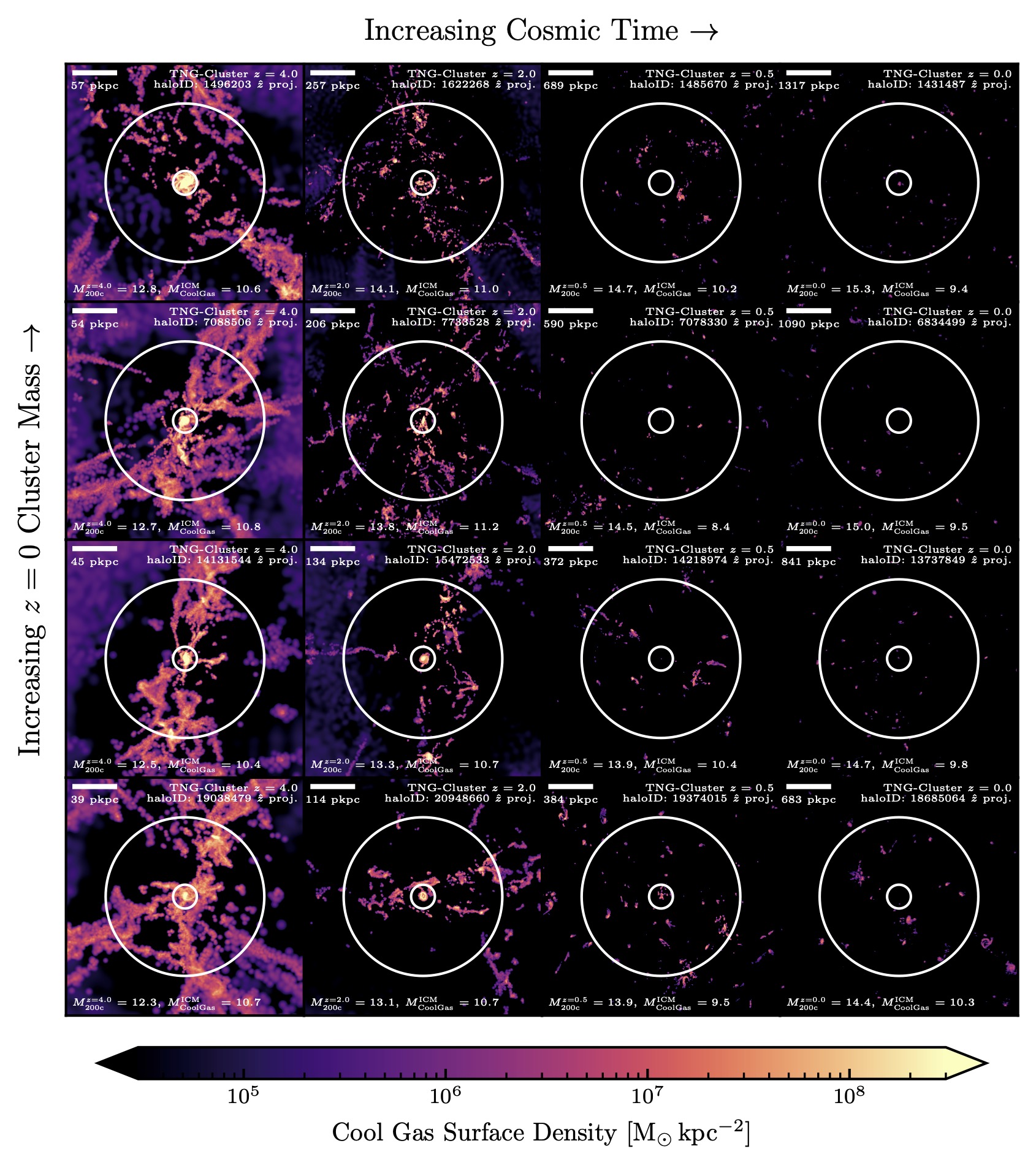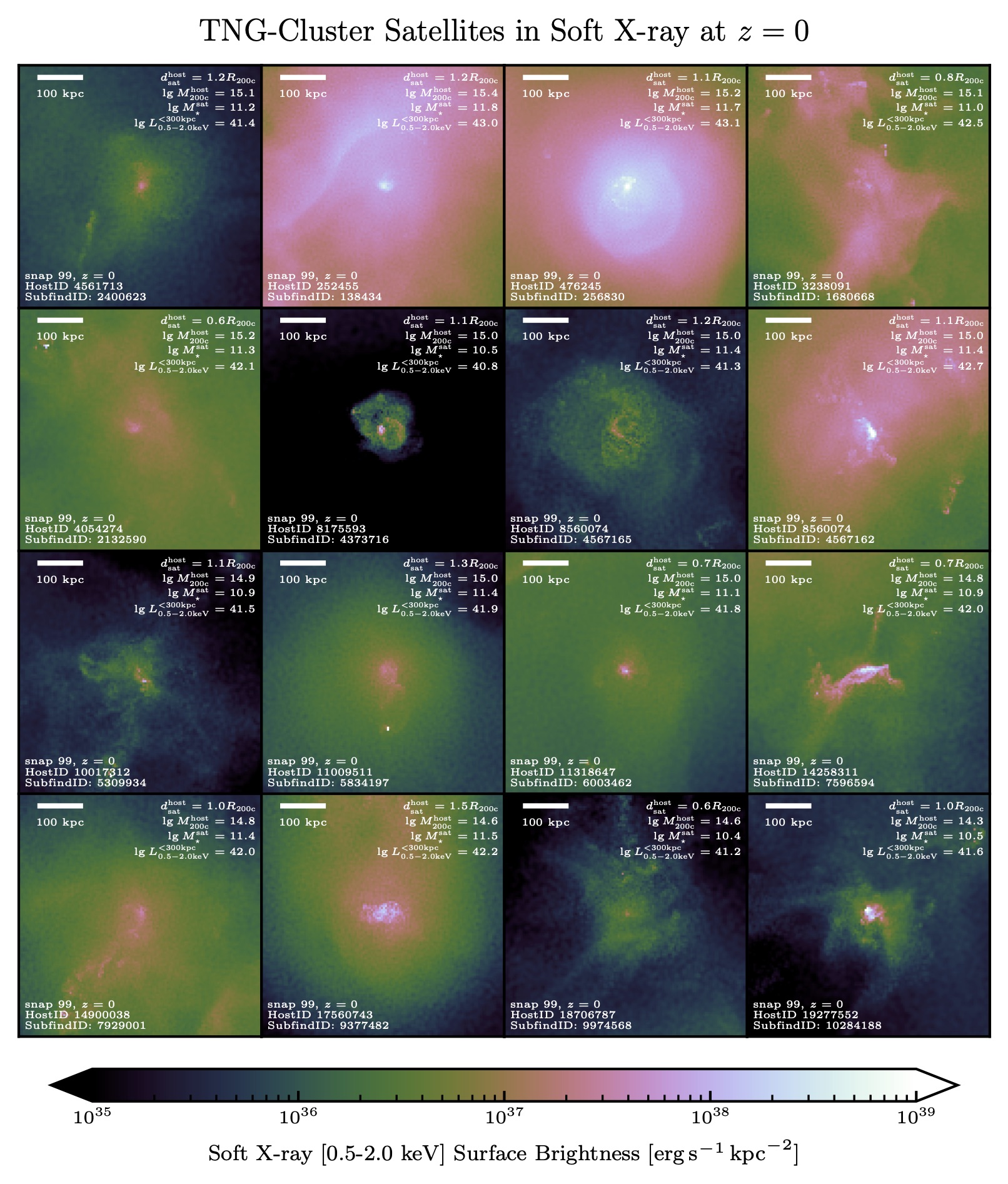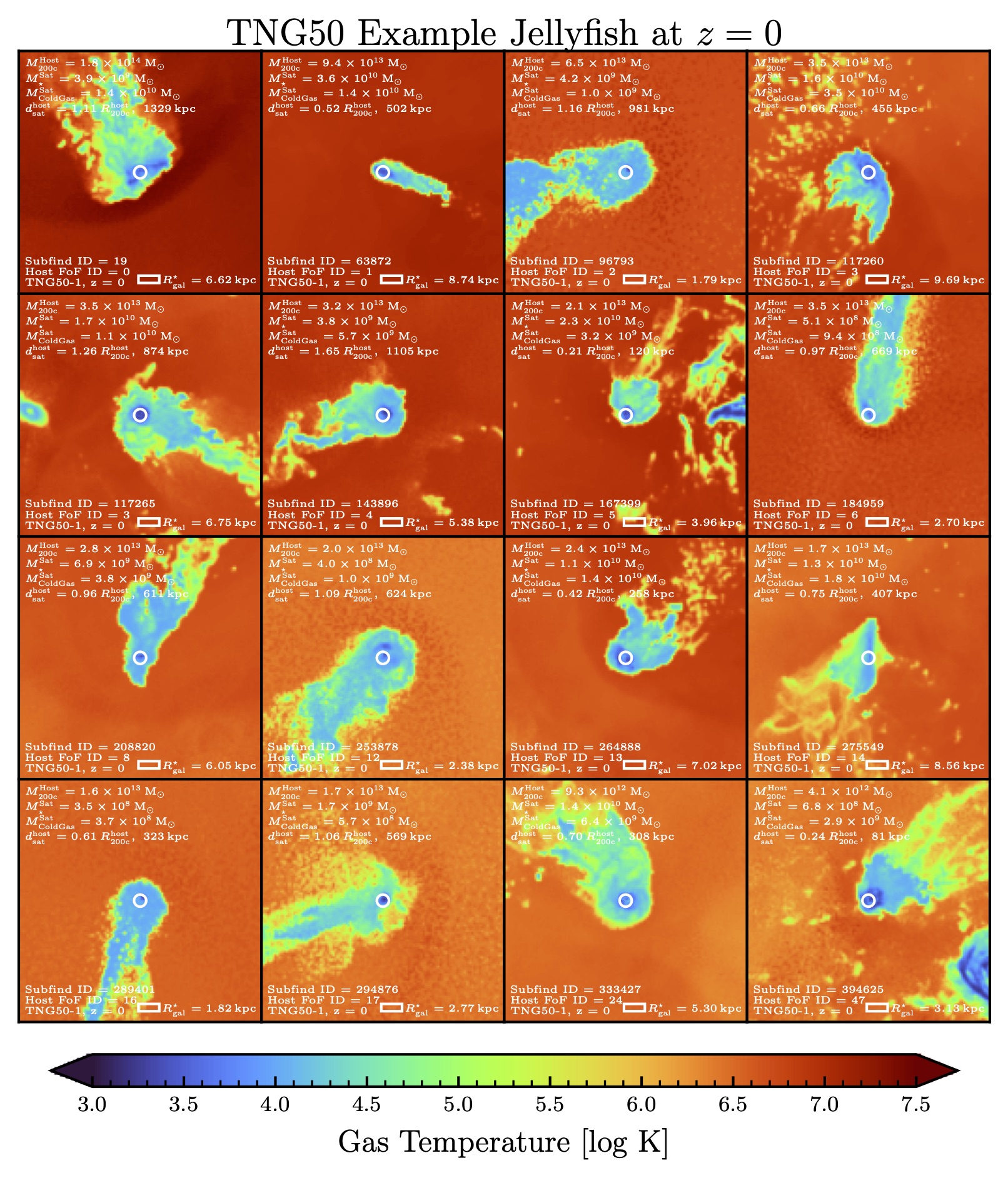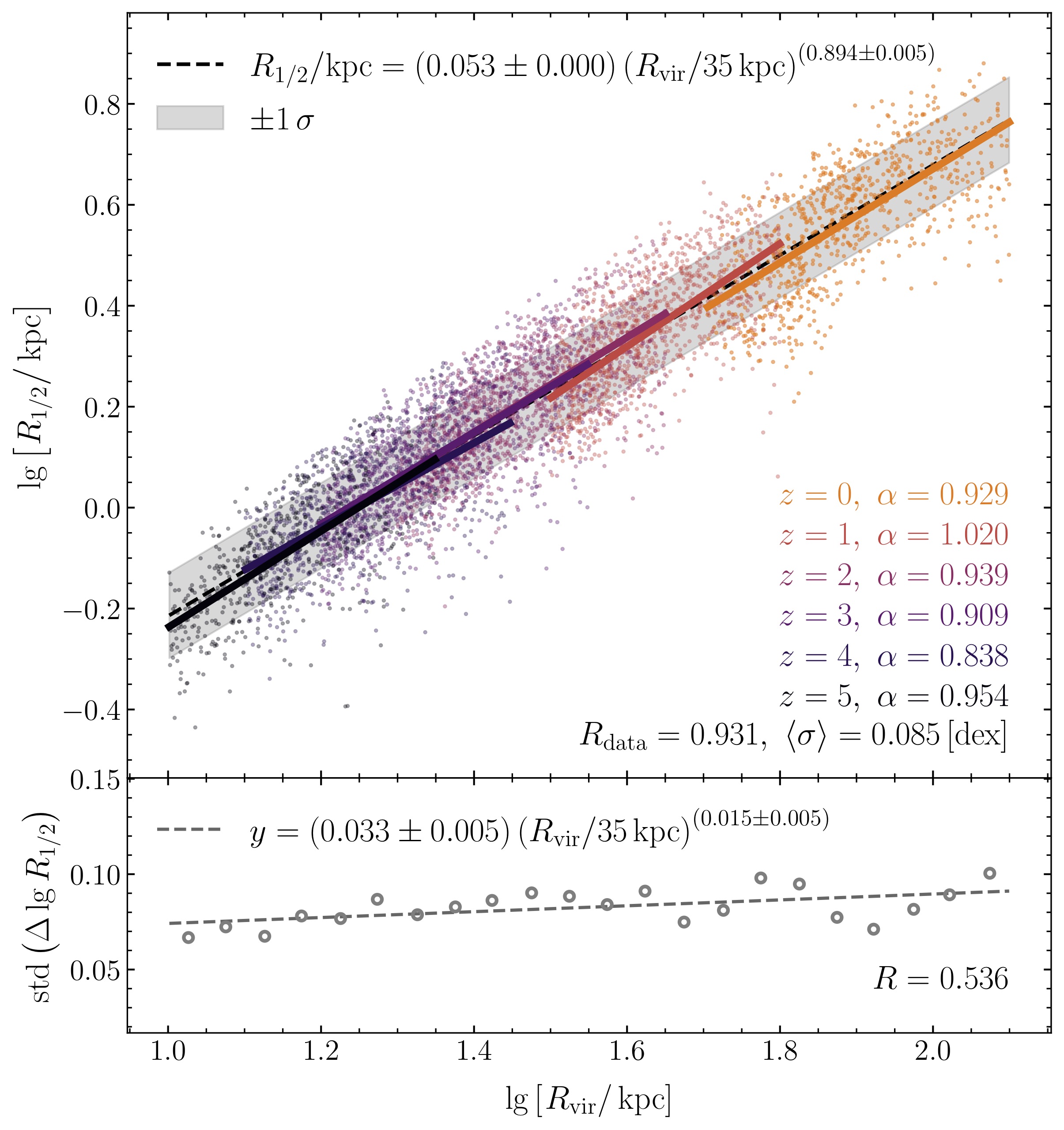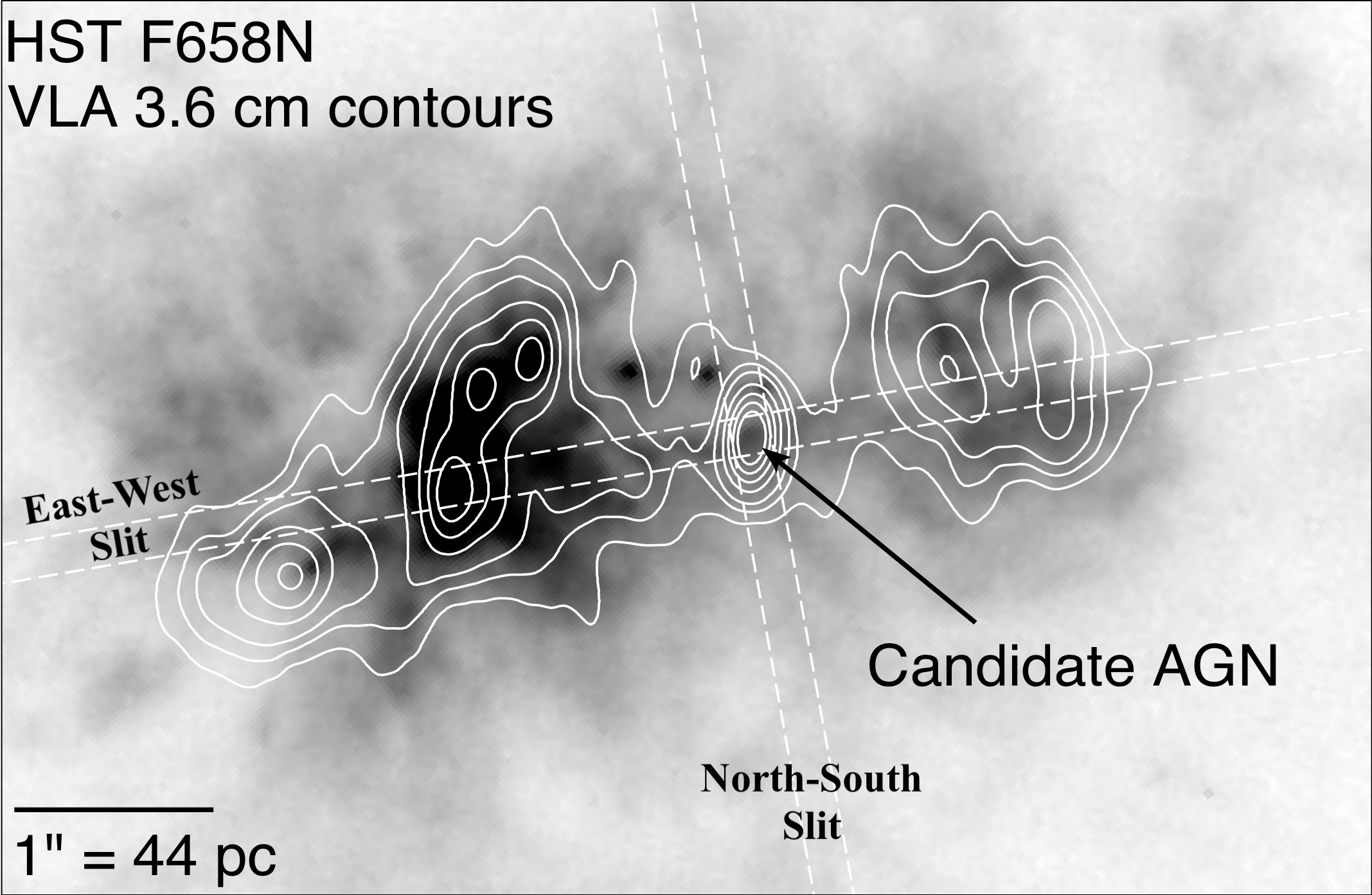Research
For a complete list of publications and conference abstracts, please see ADS or ORCiD.Jellyfish Galaxies and the Multiphase Nature of Gas Around Galaxies
Doctoral Thesis at the Max Planck Institute for Astronomy with Annalisa Pillepich
In standard models of galaxy formation and evolution, there remains open-ended but highly connected questions: how does a galaxy sustain its star formation, given its limited gas mass (i.e., the fuel to form stars); how does a galaxy quench its star formation and remain quiescent for the rest of its life. These questions address the prevalence of two observationally dominant types of galaxies -- blue and star-forming, red and dead -- but how does one journey through the green valley between these two peaks? One such avenue involves the rich interplay of gas, stars, and dust between galaxies, their halos, and extragalactic space, coined the cosmic baryon cycle. Specifically, we study how smaller, satellite galaxies evolve as they enter the circumgalactic medium (CGM) of more massive hosts. Using the unparalleled resolution and sample size from the IllustrisTNG and TNG-Cluster simulations, an observationally rare type of galaxy has emerged, and emerged often but only for short periods of time. These objects hurtle through the ambient, hot CGM at supersonic speeds, creating bow shocks at their fronts and long tails of stripped cold gas in their wakes. These "jellyfish" galaxies could be a missing link between star-forming and quiescent galaxies, while also affecting their more massive host's ability to sustain or quench its own star formation. My PhD thesis focused on how the environment affects satellite galaxies and, in turn, how satellites affect the host.
The Cool ICM in TNG-Cluster
My most recent research has has focused on the cool gas of temperatures \(\lesssim 10^{4.5}\) K in the intracluster medium (ICM) of massive clusters in TNG-Cluster. As can been seen in this collage, there was clearly much more cool ICM in the past than there exists now, at least in these four examples. In this paper, I explore the evolution of the cool ICM over the past approximately 13 billion years, since redshift 7, finding that the cool ICM mass unambiguously decreases since redshift \(\sim 2-4\). I further examine the physical mechanisms responsible for the creation, destruction, and survival of cool gas clouds in the otherwise hot ICM. Namely, I characterize the gas' ability to cool, the number of gaseous satellites, and the effects of supermassive black hole feedback across cluster radii, cluster mass, and cosmic epoch. The cool ICM mass is correlated with the number of gaseous satellites, where at a fixed mass and redshift, clusters with more gaseous satellites tend to have more cool gas in their ICM. SMBH feedback, however, heats up the ICM and hinders the ICM's ability to cool in an inside-out fashion. We make some preliminary comparisons with recent observations, where the TNG-Cluster predictions are in the ballpark of quasar absorption line studies, but more careful comparisons are needed for a more definitive statement. Interestingly, a non-negligible amount of the cool ICM in TNG-Cluster is able to form stars, especially at higher redshifts. The H\(\alpha\) flux from this in-situ ICM star formation may be observable with Euclid or JWST.
TNG-Cluster First Results: The CGM of Massive Satellites
I was part of the TNG-Cluster first results team, and we recently released most of our first results papers on arXiv! TNG-Cluster is a collection of 352 zoom-in magneto-hydrodynamic simulations of galaxy clusters. The clusters that were the targets of this project are some of the most massive galaxy clusters, some of the most massive virialized objects in the universe. The combination of sample size with competitive baryonic mass and spatial resolution, coupled with the well-validated TNG galaxy formation model, opens new avenues to statistically study galaxy clusters, their intracluster media, and their satellite galaxies. Check out the TNG-Cluster website for the other first results papers. We plan to publicly release the simulation output in 2024, but if you are interested in using the data now, we are happy to collaborate!
For the TNG-Cluster first results paper, I focused on roughly 90,000 satellite member galaxies of the galaxy clusters. Specifically, I followed the evolution of these satellites from when their birth as central galaxies, through their infall, all the way until \(z=0\) today. I examined how both internal -- namely feedback from their supermassive black holes -- and external -- namely ram pressure -- processes affect both the interstellar and circumgalactic media (ISM/CGM) reservoirs. I found over 5,000 massive satellites that retain their own CGM, despite living in harsh cluster environments, and speculate that these CGM should have observational signatures in, for example, the soft X-ray. This work is published as Rohr et al. (2024), and has been presented at A Journey Through Galactic Environments (Porto Ercole, Italy) and Building Galaxies from Scratch (Vienna, Austria) conferences.
Cosmological Jellyfish Project
My first project involved quantifying when, where, and for how long ram pressure stripping -- the process that forms the jellyfish tails -- acts on TNG jellyfish galaxies. This was part of the Cosmological Jellyfish Project, where we showed images of satellite galaxies from the TNG50 and TNG100 simulations to trained citizen scientists, asking them to answer one question: Do you think that the galaxy at the center looks like a jellyfish? Based on these answers, we have published three papers forming the Jellyfish galaxies in the IllustrisTNG simulations series. We publicly releasedthe results from this project and are happy to collaborate! For my paper, I developed a tracer particle scheme to track the gas from the interstellar media (ISM) to the jellyfish tails and beyond. After confirming that ram pressure stripping was the primary cause of jellyfish gas loss, I showed that jellyfish galaxies, and satellites in general, deposit more cold gas into halos than exist in them today. I've presented the results as a poster at the virtual Galaxy Clusters conference hosted by the Space Telescope Science Institute and as full talks at the Epoch of Galaxy Quenching (Cambridge, UK), What Matter(s) around Galaxies (Champuloc, Italy), and A Journey Through Galactic Environments (Porto Ercole, Italy) conferences. We published this work in Rohr et al. (2023) and in this Galactic Environments Pub.
The Galaxy-Halo Size Relation in FIREbox
ThinkSwiss Research Scholar Summer Project at the University of Zurich with Robert Feldmann
I spent the summer of 2018 working with Robert Feldmann and his group at the University of Zurich in Switzerland, courtesy of the ThinkSwiss research program. While there and afterwards, I studied the relationship between the sizes of low mass galaxies (M* ~ 10^7-9 Msun) measured by their stars and their halos measured by their dark matter. In the attached plot of low mass galaxies since z=5 in FIREbox, we see that the population at a given redshift has an approximately linear relationship between galaxy stellar size R_1/2 and dark matter halo virial radius R_vir. However, across the populations at different redshifts, the relationship is sub-linear with power-law index alpha ~ 0.9. We found that the halo spin and its concentration, the former a proxy for its formation time, do not reduce the scatter in this galaxy-halo size relation (GHSR), contrary to some classical theories of galaxy formation. However, for these same galaxies, the halo spin and concentration are significant in setting the normalization of the stellar-halo mass relation (SHMR). This suggests for this sample of galaxies that the GHSR is just as or perhaps more fundamental than the SHMR. I presented these results at the AAS Winter Conference in 2020 in Hawaii, and we published the results in MNRAS 2021.
Implementing General Relativity to the Athena++ Monte Carlo Radiative Transfer Code
Bachelor Thesis at the University of Virginia with Shane Davis
For my Bachelor Thesis, Why We Should Kerr about the Dark Secretes of the Relativistic Accretion Disks, I implemented a general relativity photon integrator into the monte carlo radiative transfer module of Athena++ with my advisor Shane Davis. We used this ray tracer to create simulated images and spectra of supermassive black holes and their hot accretion disks. We have compared this method with other numerical integrators and analytic solutions for given test problems, and our module reproduces the expected results. Then we can extend the code's usefulness to more interesting astrophysical scenarios, for example, by including Thomson and Compton scattering or returning radiation. This work is still in progress, and we are expecting to publish the results and this module of Athena++ soon!
Hubble STIS Observations of the Central Multi-Wavelength Source in Henize 2-10
VSGC Undergraduate Research Project at the University of Virginia with Mark Whittle
My first research project analyzed the central, multi-wavelength source in Henize 2-10 postulated to be an intermediate mass black hole (IMBH) with Hubble Space Telescope spectra. We concluded that the spectra are consistent with both a supernova remnant and an IMBH, and I presented these results at the IAU symposia 334 in Vienna, Austria and at the AAS winter conference in 2019 in Seattle, US.

